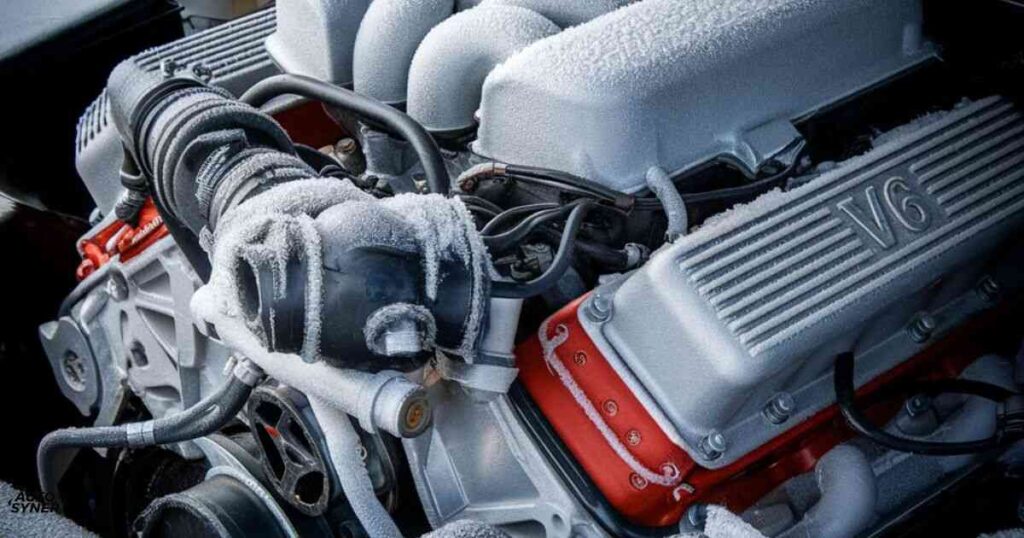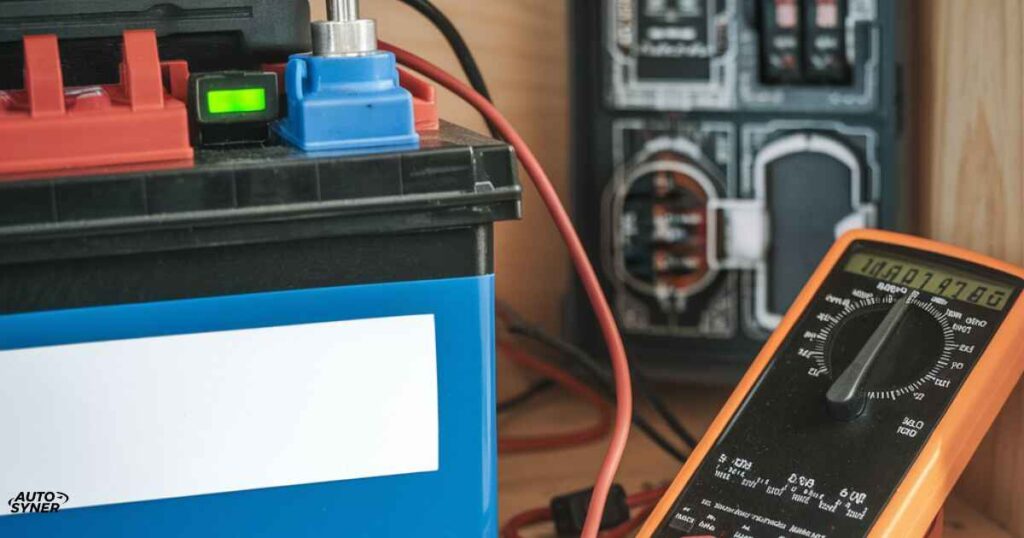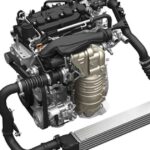As winter’s icy grip tightens, drivers across the globe face a common challenge: declining fuel economy. How cold temperatures affect car fuel is a question that perplexes many, especially when they notice their vehicles guzzling more gas than usual. This comprehensive guide, updated for 2024, delves into the intricate relationship between chilly weather and your car’s thirst for fuel, offering insights and practical tips to keep your wallet as warm as your engine.
Cold Weather and Fuel Economy
When the mercury plummets, your car’s fuel efficiency often follows suit. It’s not just your imagination – cold temperatures affect car fuel consumption in very real and measurable ways. As we navigate through the frosty months of 2024, understanding this phenomenon becomes crucial for both your budget and the environment.
The connection between temperature and fuel consumption isn’t just anecdotal. Studies have shown that for every 10°F drop in temperature, fuel economy can decrease by as much as 3-4%. This means that on a frigid 20°F day, your car might be burning up to 15% more fuel than it would on a balmy 70°F afternoon. But why does this happen? Let’s warm up to the science behind it.
The Science Behind Fuel Economy in Cold Weather
To truly grasp how cold temperatures affect car fuel efficiency, we need to dive into the nitty-gritty of automotive engineering and thermodynamics. It’s a complex interplay of factors, each contributing to the overall decrease in miles per gallon (MPG) that many drivers observe when the frost sets in.
Understanding Fuel Economy Basics

Fuel economy, at its core, is a measure of how far your vehicle can travel on a given amount of fuel. It’s typically expressed in miles per gallon (MPG) in the United States or liters per 100 kilometers in many other parts of the world. In ideal conditions, your car’s engine converts the chemical energy stored in fuel into kinetic energy that propels you down the road. However, this process is never 100% efficient, and cold weather exacerbates the inefficiencies.
Why Does Fuel Economy Drop in Cold Weather?
The drop in fuel economy during cold weather isn’t due to a single factor but rather a combination of elements that conspire against your car’s efficiency. Cold temperatures affect car fuel consumption through various mechanisms:
- Increased air density
- Thicker engine oil
- Reduced battery performance
- Longer warm-up times
- Increased use of auxiliary systems like heaters
Each of these factors plays a role in reducing your car’s overall efficiency, leading to that noticeable dip in MPG when winter rolls around.
Key Factors Affecting Fuel Economy in Cold Temperatures
Let’s break down the main culprits behind winter’s fuel economy woes, examining how each element contributes to the overall picture of how cold temperatures affect car fuel consumption.
Engine Performance in Cold Weather
When you fire up your engine on a frosty morning, it’s not just you that’s struggling to get going. Cold engines are less efficient because the oil that lubricates the moving parts is thicker and doesn’t flow as easily. This increased viscosity means your engine has to work harder, burning more fuel in the process. Additionally, cold engines run rich – meaning they use more fuel than necessary – to prevent stalling and ensure smooth operation during the warm-up phase.
Tire Pressure and Cold Weather
Your tires play a crucial role in fuel economy, and they’re not immune to winter’s effects. For every 10°F drop in temperature, tire pressure decreases by about 1-2 PSI. Underinflated tires increase rolling resistance, forcing your engine to work harder and consume more fuel. Regularly checking and maintaining proper tire pressure is a simple yet effective way to combat how cold temperatures affect car fuel efficiency.
Aerodynamics and Cold Air Density
Cold air is denser than warm air, which means your car has to work harder to push through it. This increased air resistance, particularly at highway speeds, can significantly impact fuel economy. While you can’t change the laws of physics, understanding this phenomenon helps explain why your MPG might drop even on clear winter days.
Battery Performance in Low Temperatures
Your car’s battery doesn’t escape winter’s wrath either. Cold temperatures reduce battery capacity, making it harder for the battery to provide the necessary power to start the engine and run electrical systems. This increased strain on the battery means the alternator has to work overtime, putting additional load on the engine and, you guessed it, using more fuel.
Winter Fuel Composition
Did you know that the gasoline you pump in winter isn’t the same as summer fuel? Refineries adjust fuel composition for cold weather to ensure proper engine function and prevent fuel line freezing. While these winter blends are necessary for reliable operation, they typically contain slightly less energy per gallon, contributing to reduced fuel economy.
The Role of Engine Performance in Cold Weather

Now that we’ve covered the broader factors, let’s zoom in on the engine itself to see how cold temperatures affect car fuel consumption at the heart of your vehicle.
Increased Oil Viscosity
Engine oil is the lifeblood of your car’s powerplant, and cold weather makes it sluggish. Thicker oil doesn’t circulate as easily, increasing friction between moving parts. This added resistance means your engine has to work harder, burning more fuel to overcome the internal friction. Modern synthetic oils help mitigate this issue, but they can’t eliminate it entirely.
Longer Warm-Up Times
In the past, it was common practice to let your car idle for several minutes to “warm up” on cold days. While modern engines don’t require this, they still take longer to reach optimal operating temperature in cold weather. During this extended warm-up period, fuel efficiency suffers as the engine runs rich to prevent stalling and ensure smooth operation.
Increased Idling in Cold Weather
Despite advances in engine technology, many drivers still fall into the trap of excessive idling in cold weather. Whether it’s to defrost windows or warm up the cabin, this practice is a fuel economy killer. An idling engine gets 0 MPG, and the myth that idling is better than restarting has been thoroughly debunked for modern vehicles.
Cold Air Intake Effects
Cold air is denser and contains more oxygen than warm air. While this might sound like a good thing for combustion, it actually throws off the carefully calibrated air-fuel mixture in your engine. To compensate, the engine management system adds extra fuel, reducing efficiency until everything warms up to optimal temperature.
Battery Performance and Electrical Systems

We touched on battery performance earlier, but it’s worth diving deeper. Cold weather doesn’t just make it harder for the battery to start your car; it also reduces its ability to power other electrical systems. This means your alternator has to work harder, putting additional strain on the engine and using more fuel in the process.
Increased Friction in Cold Engines
It’s not just oil that’s affected by cold temperatures. All the moving parts in your engine contract slightly in the cold, changing clearances and potentially increasing friction. While these changes are minute, they add up to a noticeable impact on fuel economy, especially during the initial warm-up period.
Auxiliary Systems in Cold Weather
When the temperature drops, we crank up the heat, turn on the seat warmers, and blast the defroster. These comfort features, while essential for safe and comfortable winter driving, put additional load on the engine. The power to run these systems has to come from somewhere, and that somewhere is your fuel tank.
Practical Tips to Maintain Fuel Efficiency in Cold Weather
Now that we understand how cold temperatures affect car fuel consumption, let’s explore some practical strategies to keep your MPG from plummeting along with the temperature.
Keeping Your Vehicle Warm
If possible, park your car in a garage or use an engine block heater. Starting with a warmer engine reduces the warm-up time and minimizes the period of inefficient operation. If a garage isn’t an option, consider using a windshield cover to at least keep frost at bay.
Monitoring and Maintaining Tire Pressure
Make checking your tire pressure a regular part of your winter routine. Properly inflated tires improve fuel economy and enhance safety on slippery roads. Remember, tire pressure can drop about 1 PSI for every 10°F decrease in temperature.
Using the Right Oil for Cold Temperatures
Consult your owner’s manual and consider switching to a winter-grade oil that maintains better viscosity in cold weather. This can help reduce engine wear and improve fuel efficiency during those crucial first few minutes of operation.
Reducing Idling Time in Cold Weather
Resist the urge to idle your car for extended periods. Modern engines warm up more efficiently when driving, so start your trip as soon as the windows are clear. If you must warm up the car, do it for no more than 30 seconds before gently driving off.
Optimizing Trip Planning for Cold Weather
Combine short trips whenever possible. Cold starts are when your car is least efficient, so reducing the number of times you need to start a cold engine can have a significant impact on your overall fuel economy.
Advanced Technologies Addressing Cold Weather Fuel Efficiency
As we look to the future, automakers are developing new technologies to combat how cold temperatures affect car fuel efficiency. From advanced thermal management systems to smart start-stop technology that takes temperature into account, these innovations promise to narrow the gap between winter and summer fuel economy.
One particularly promising area is the development of ultra-low viscosity engine oils that maintain better flow characteristics in cold weather. These oils, combined with engine designs optimized for cold starts, could significantly reduce the fuel economy penalty associated with winter driving.
Read This Blog: Stop Vehicle Leave Engine Running Mercedes
Environmental Impact of Increased Fuel Consumption in Winter
The drop in fuel economy during winter months isn’t just a hit to your wallet; it also has broader environmental implications. Increased fuel consumption means higher emissions of greenhouse gases and other pollutants. As we collectively become more aware of our carbon footprint, understanding and mitigating the effects of how cold temperatures affect car fuel consumption becomes an environmental imperative as well as an economic one.
Frequently Asked Questions
What is the best weather for fuel economy?
Generally, mild temperatures around 70°F (21°C) are ideal for fuel economy. At this temperature, air density is optimal, and engines don’t need to work as hard to overcome cold-start inefficiencies or power air conditioning systems.
How much does cold weather affect fuel economy?
On average, fuel economy can drop by 10-20% in very cold weather compared to mild conditions. For short trips under four miles, the decrease can be as high as 30-40% due to the engine not reaching optimal operating temperature.
Does cold air improve fuel economy?
While cold air is denser and contains more oxygen, which can theoretically improve combustion, the overall effect of cold temperatures on fuel economy is negative. The increased air density also means more aerodynamic drag, which outweighs any potential benefits.
Also Read This Blog: Service Side Detection System: Meaning, Causes & How to Reset
Should I keep my diesel tank full in winter?
Yes, it’s advisable to keep your diesel tank at least half full in winter. This reduces the amount of air in the tank, minimizing condensation that can lead to water in the fuel system – a particular concern for diesel engines in cold weather.
What can I add to my diesel in the winter?
Anti-gel additives can be beneficial for diesel fuel in winter. These prevent the formation of wax crystals that can clog fuel filters in extremely cold temperatures. However, most modern diesel fuels are already formulated for winter use, so additives may not be necessary unless you’re operating in extreme cold.
How can I improve my car’s fuel efficiency in winter?
Combine trips to reduce cold starts, maintain proper tire pressure, use the recommended grade of oil, avoid excessive idling, and remove unnecessary weight from your vehicle. Additionally, using a block heater if available can significantly improve cold-start efficiency.
Do electric cars lose range in cold weather?
Yes, electric vehicles typically experience a reduction in range during cold weather. This is primarily due to increased energy consumption for cabin and battery heating, as well as reduced battery efficiency in low temperatures. The range reduction can be anywhere from 10-40% depending on the specific vehicle and conditions.
Conclusion
As we’ve explored throughout this guide, cold temperatures affect car fuel efficiency in numerous ways, from the physics of air density to the chemistry of engine oil. While we can’t change the weather, understanding these factors empowers us to take proactive steps to maintain better fuel economy even in the depths of winter.
By implementing the practical tips we’ve discussed – from proper vehicle maintenance to smart driving habits – you can significantly reduce the impact of cold weather on your fuel consumption. Remember, every little bit helps, both for your budget and for the environment.
As we look to the future, advancing automotive technologies promise to further mitigate the effects of cold weather on fuel efficiency. Until then, armed with knowledge and practical strategies, you’re well-equipped to face the winter roads with confidence, knowing you’re getting the most out of every drop of fuel.







